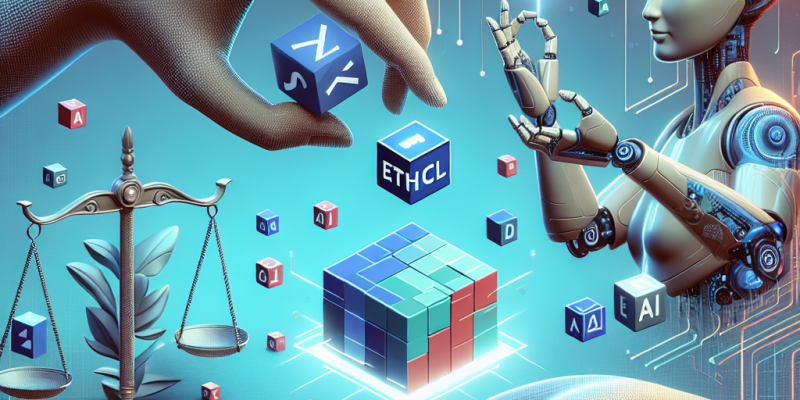Human Values and Machine Learning: Crafting Ethical Guidelines for AI

As artificial intelligence (AI) technology rapidly advances and integrates into various aspects of daily life, the intersection of human values and machine learning (ML) has become increasingly critical. The potential for AI to affect societal norms, economic structures, and individual lives necessitates a thoughtful approach to its development, deployment, and regulation. Therefore, establishing ethical guidelines for AI rooted in human values is imperative for fostering trust, ensuring equity, and preserving social norms.
The Significance of Human Values in AI
1. Moral Compass
Human values serve as the moral compass guiding the creation and application of machine learning technologies. These values encompass principles such as fairness, transparency, accountability, and respect for privacy. By embedding these values into the design process, developers can ensure that AI systems do not inadvertently reinforce biases or perpetuate discrimination.
2. Building Trust
Trust is a fundamental component of human interaction, and the same applies to our relationship with technology. Users are more likely to embrace AI applications that align with ethical guidelines reflecting their values. By prioritizing user-centric development and maintaining clear communication about the workings of AI systems, developers can promote transparency and foster trust.
3. Social Responsibility
AI systems have a profound impact on society, influencing decision-making in healthcare, finance, law enforcement, and beyond. Ethical guidelines help ensure that these systems operate in a socially responsible manner, prioritizing the welfare of individuals and communities over profit. This includes considering the broader implications of AI deployments and addressing issues such as job displacement, privacy concerns, and the digital divide.
Challenges in Integrating Human Values
1. Diverse Perspectives
Human values are inherently subjective and can vary widely across cultures, communities, and individuals. This diversity poses a significant challenge in crafting universal ethical guidelines for AI. Efforts to create inclusive frameworks must involve a wide array of stakeholders, including policymakers, technologists, ethicists, and representatives from marginalized communities.
2. Technical Complexity
Machine learning is a complex and often opaque process. The algorithms that drive AI systems are not always easily interpretable, which makes it difficult to assess their alignment with human values. Developing methods for explainable AI (XAI) is crucial to bridging this gap, allowing both developers and users to understand how decisions are made.
3. Balancing Innovation and Ethics
The tech industry thrives on rapid innovation, which can sometimes come at odds with ethical considerations. A focus on speed and profitability can lead to the deployment of AI systems without fully addressing potential ethical implications. Striking a balance between fostering innovation and adhering to ethical guidelines is essential for sustainable development.
Crafting Ethical Guidelines
1. Collaborative Approach
To create comprehensive ethical guidelines, a collaborative approach is essential. This means engaging various stakeholders, including technologists, ethicists, policymakers, and affected communities, in a dialogue to ensure diverse perspectives are considered. Creating forums for discussion and collaboration can help build consensus around guiding principles.
2. Framework for Accountability
Establishing a framework that promotes accountability is vital for ethical AI development. This includes mechanisms for auditing AI systems, providing redress for harm, and ensuring compliance with ethical standards. Developers should be held accountable for the implications of their technologies, fostering a culture of responsibility in AI deployment.
3. Continuous Evaluation
Ethical guidelines for AI should not be static. The rapid evolution of technology necessitates continuous evaluation and adaptation of ethical frameworks. Establishing feedback loops where users and stakeholders can provide input on the societal impacts of AI can help organizations stay aligned with evolving values.
4. Educational Initiatives
Promoting education about AI ethics is crucial for equipping developers, users, and policymakers with the knowledge needed to navigate the complexities of AI. Enhanced understanding of ethical considerations can empower stakeholders to make informed decisions, advocate for responsible innovation, and contribute to the establishment of ethical AI practices.
Conclusion
As we progress into an era increasingly dominated by machine learning and AI, the importance of integrating human values into these technologies cannot be overstated. By crafting ethical guidelines that reflect diverse perspectives and prioritize accountability and transparency, we can ensure that AI systems serve humanity in a fair and equitable manner. Through collaboration, continuous evaluation, and education, we can create a future where machine learning operates harmoniously with the fundamental principles that define our shared humanity.














